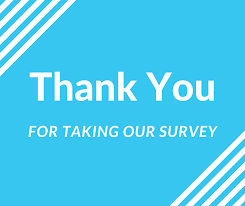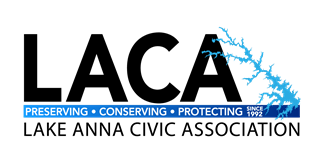By Greg Baker – July 2022
Thank you again for participating in the biennial 2021 LACA Member Survey. The goal of the board is to listen to the feedback from the membership and use this information to form the positions that we take as an organization.  The board takes this feedback seriously. Over the course of the year, we plan to publish several newsletter articles that share the results and most importantly, LACA’s response to the feedback. This is the second article related to the survey, you may read the first article focusing on Water Quality Issues by following this link.
The board takes this feedback seriously. Over the course of the year, we plan to publish several newsletter articles that share the results and most importantly, LACA’s response to the feedback. This is the second article related to the survey, you may read the first article focusing on Water Quality Issues by following this link.
The focus of this article is to address the feedback that we received on questions that were not specific to one of our five standing committees which include, Water Quality, Environmental Preservation, Emergency Services & Safety, Fireworks and Land Use.
Question #9 asked if LACA should get involved in the regulation of short-term rentals (STR). LACA’s focus would be related only to issues outlined in our mission statement. This would include how overcapacity on septic systems impact the water quality on the lake and how over-capacity impacts the safety of the renters if they do not have working fire extinguishers or egress to bedrooms. The response was overwhelmingly (80.54%) in favor of LACA supporting regulation. We also received 58 comments on this questions that primarily focused on over-capacity.
In response, the board has taken a position to support smart regulation related to preventing STRs from renting over the capacity of their septic system. This means no more than 2 people per bedroom as it is stated in the septic permit. We have publicly supported the pending ordinance in Louisa County related to STRs. We have made a presentation to the Spotsylvania County Board of Supervisors on the issue. To be clear, LACA is NOT opposed to STRs at Lake Anna, we will continue to fight on your behalf for reasonable regulation to prevent STRs from renting over capacity and to require working fire extinguishers in STRs and all bedrooms to have proper egress.
Question #10 asked if our members currently rent their lake homes as STRs. Less than 4% of our members currently rent their homes.
Question #18 focused on our dues which have been $15 per year since the founding of the organization 30 years ago. This is the second time that we polled the membership regarding increasing dues. On both occasions, the membership responded that they would support an increase in dues. Just under 95% of the members supported an increase of at least $5 and well over 50% supported an increase of $10.
LACA has made significant investments in our water quality testing capabilities with the advent of Harmful Algae Blooms on Lake Anna and the corresponding Recreational Advisories (no-swim warnings) from Virginia Department of Health. In the past, LACA primarily financed our water quality testing program with grants from DEQ, Louisa and Spotsylvania Counties. For the past several years, given the urgency of the HAB problem, we have spent far more than the grants that we receive.
This is not financially sustainable for LACA to continue. To overcome this deficit, we have asked for increases in our grants from both Louisa and Spotsylvania County. We are grateful to announce that both Louisa and Spotsylvania County approved these requests. We requested funding from Orange County as well, but to date, have never received any funding from Orange County. We have moved to an electronic version of newsletter. This has been well received and has removed one of the largest line items in our budget which was the mailing and printing of our newsletter.
Even with the increased grants and the reduction in costs within LACA, we continue to run a deficit in our water quality programs. Primarily for this reason, the board voted unanimously to implement an increase in our dues to $25 per year effective January 1st, 2022. There continues to be significant discounts if you extend your membership for over a one-year period. The board notified the membership in the fall of 2021 and gave our members the opportunity to extend their memberships prior to the scheduled increase.
Question #23 asked about a new mandate for LACA. This would create a “President’s Council” made up of HOA/POA Presidents or their appointed representative.  The goal of the council would be to provide a forum at Lake Anna to share best practices and ideas with the communities surrounding the lake. The membership overwhelmingly (86.81%) supported this concept.
The goal of the council would be to provide a forum at Lake Anna to share best practices and ideas with the communities surrounding the lake. The membership overwhelmingly (86.81%) supported this concept.
Based on this feedback, the board has been working very hard to come up with what this might look like. At the most recent board meeting in July, the board unanimously voted to establish the council. Please be on the lookout for more information related to the council over the coming months. We will need your help. With close to 200 HOA/POAs on Lake Anna, it is a challenge to know who the president is for each organization. We will be reaching out for your help in identifying who should be invited to join the council.
Questions #25 through #29 related to our annual meeting and its content. We have had terrific feedback on the annual meeting, and we hope that you will attend the 2022 LACA Annual Meeting on July 30th. To attend, you may preregister by following this link.
Because of Covid, our 2020 Annual Meeting was conducted later than usual and virtually via Zoom. It was well attended. In 2021, we were able to do a hybrid approach offering both the opportunity to attend via Zoom or in-person. We have had terrific feedback on this approach and we hope to offer both in-person attendance as well as broadcasting the meeting via Zoom going forward.
LACA scored well on the amount and quality of the content that we present at the meetings with 91% of our respondents suggesting we hit “just the right amount of information.” Having a guest speaker is strongly supported by our membership. The most requested quest speaker by a small margin was to have a member of Louisa and/or Spotsylvania County government speak to the long-term master plan for Lake Anna. Coming in tied for the second most requested speaker would be either a Dominion representative to speak about the nuclear power plant and its operation or a member of local government to speak about the long-term plan for high-speed internet at Lake Anna.
This year, given the 50th anniversary of Lake Anna, we are excited to have Katelyn Coughlan, Execute Director of the Louisa County Historical Society speak about the history of Lake Anna.
Finally, we received 88 comments with ideas to address at the annual meetings. These comments ranged from controlling sound levels on boats, to HAB remediation plans, to more police patrolling the lake, to bulkhead issues, to high-speed internet and many, many more. We encourage all our members to participate in the annual meeting. At the end of the meeting, we will have an open forum where we hope to answer as many of these questions as possible and to understand the concerns of our members!
greg.baker@lakeannavirginia.org

